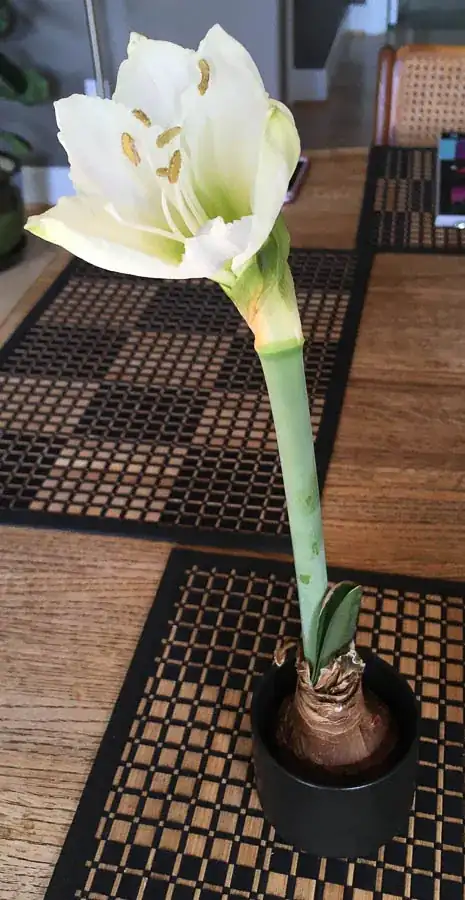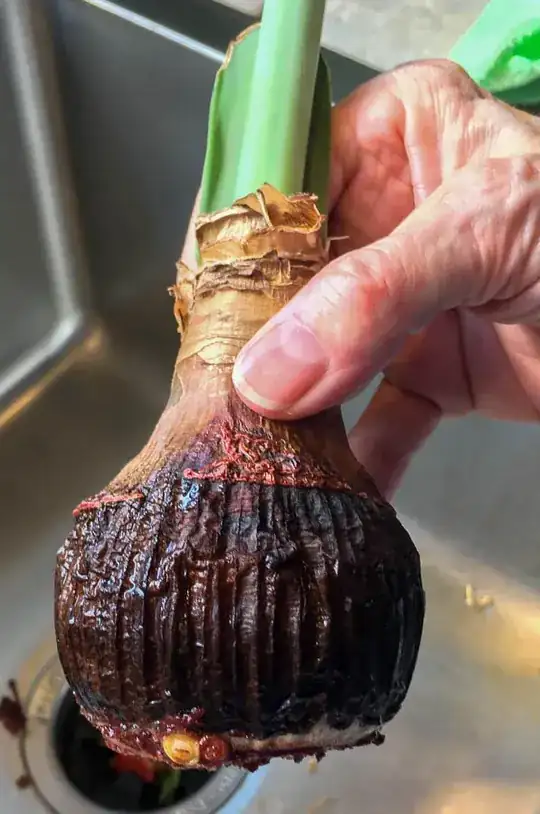We received one of those wax-wrapped amaryllis bulbs as a Christmas gift.
It sent up two stalks with four deep red flowers each. After the flowers were spent we removed the wax and put it in water to see if it would start rooting. When we did this previously with another wax-wrapped bulb, that one immediately shot out roots, so it's in the greenhouse now. This second one did not send out roots.
A couple of weeks ago it started sending up a second stalk, and this one has white flowers.
It was my understanding that amaryllis bulbs offspring can change color if they're hybrids, but not an individual bulb.
My guess is that what we see as a single bulb is really a combination of at least two genetically distinct bulblets that somehow ended up together. Is there another explanation?

